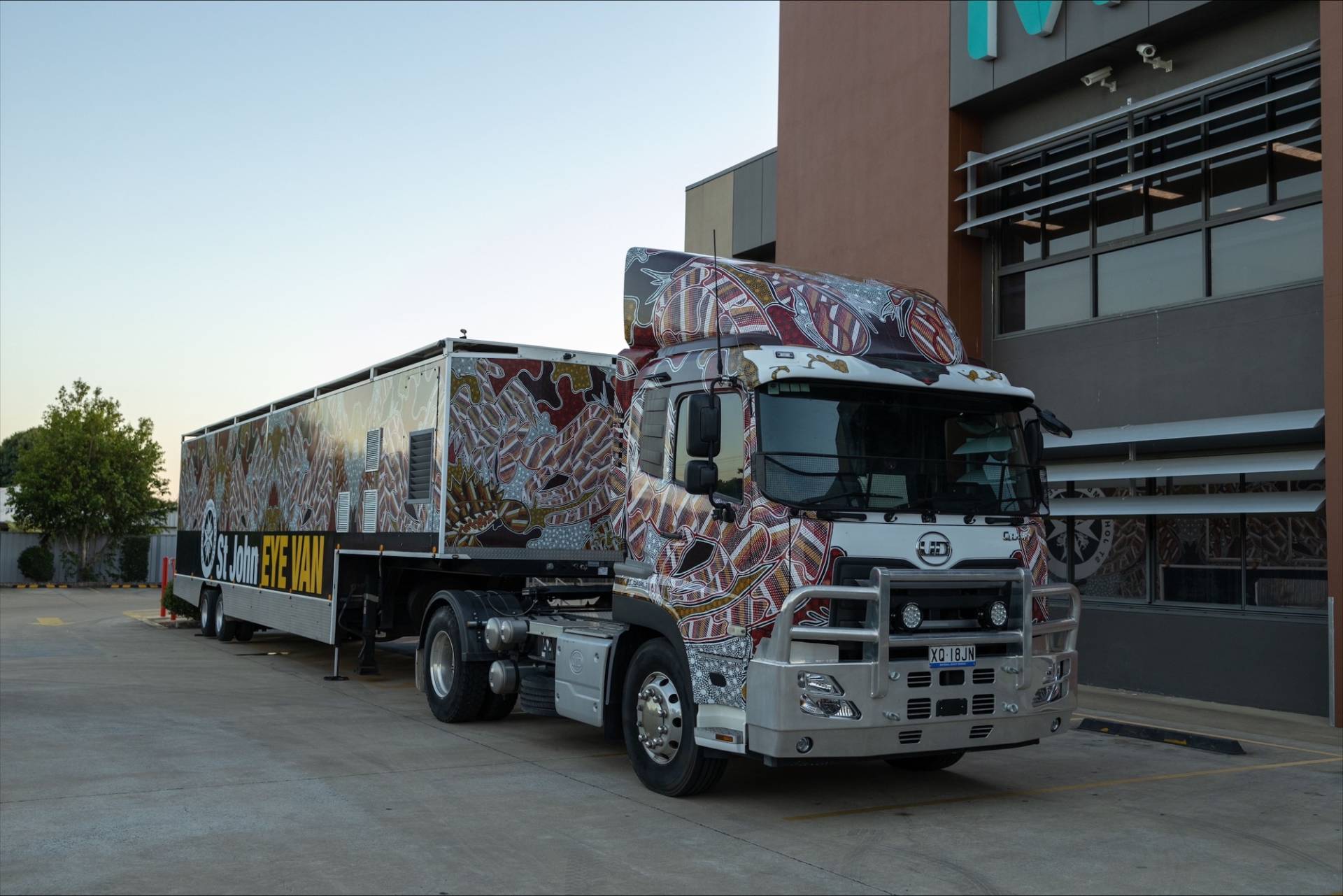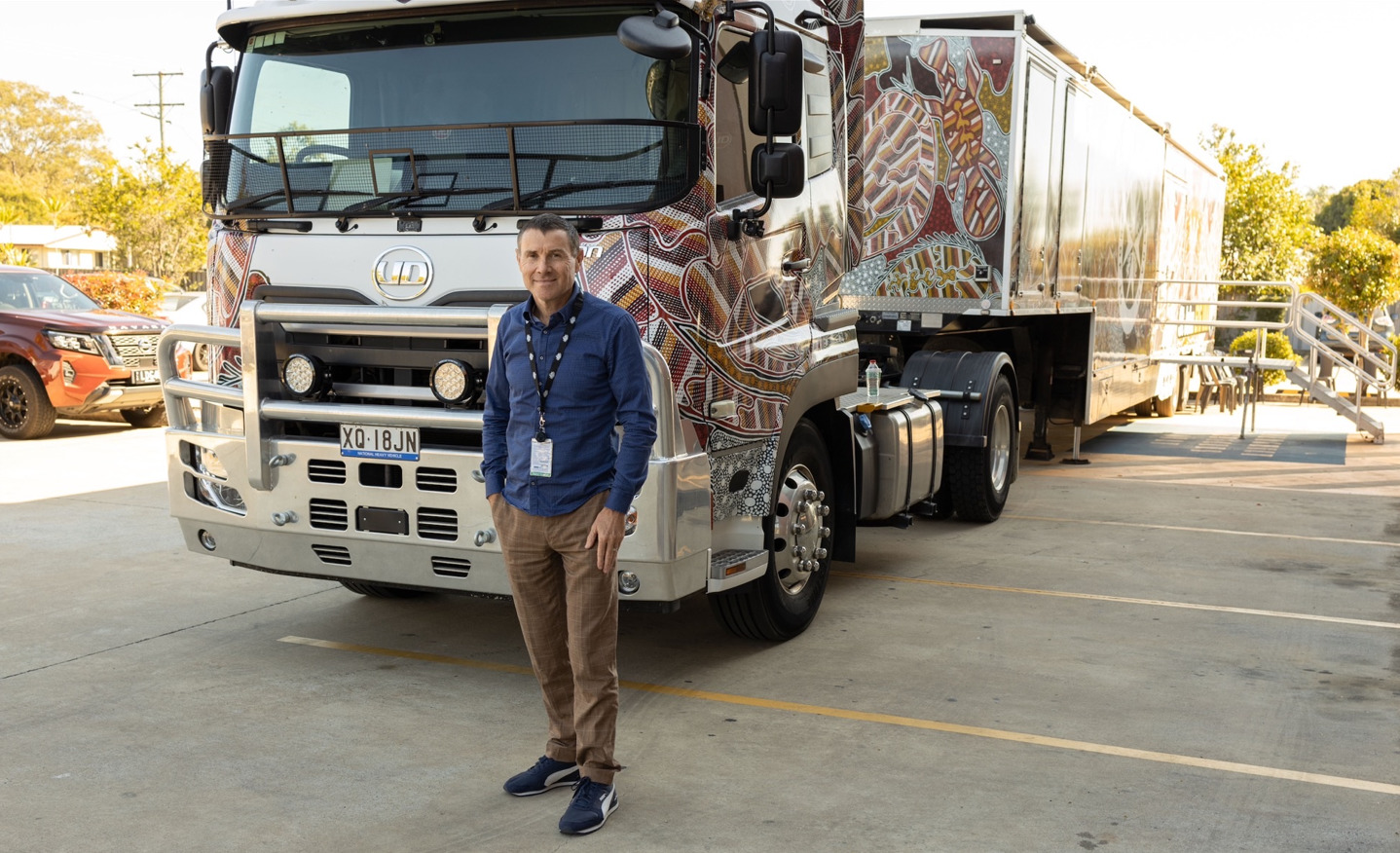St John Eye Van has expanded its service to Bundaberg to service the demand in the Wide Bay Burnett region.
Lyndall De Marco, the General Manager of Ophthalmic Programs for St John Ambulance Queensland, emphasised the importance of this endeavour.
“Our sight-saving program reduces preventable blindness through our mobile ophthalmic treatment facility. The St John Eye Van travels to rural and remote First Nations communities across Queensland, making it possible for more ophthalmologists to bring their expertise to people that are marginalised due to distance and access.
Those diagnosed with diabetes are three times more likely to suffer from diabetic retinopathy, and 94% of identified cases are curable or treatable when diagnosed early.
Alarmingly, one in three diagnosed individuals will also experience vision loss, which, if detected in the early stages, can be prevented, or treated in 94% of cases,” she said.

The Eye Van outside the Indigenous Well-Being Centre in Bundaberg
THE NEED FOR THE SERVICE IN BUNDABERG
St John Eye Van’s return to Bundaberg has been warmly welcomed back by Wayne Mulvany, the CEO of the Indigenous Wellbeing Centre.
“We are excited to welcome this service back, the previous service helped treat 400 Bundaberg patients between 2016 to 2018, Services like this are incredibly important for our community.
This service provides patients access to an Ophthalmologist, Optometrist, and Orthoptist to reduce the risk of blindness from sight-threatening conditions like Diabetic Retinopathy.
First Nations people can also be at greater risk of developing Type I and Type II Diabetes, and we know diabetes can be a silent killer” he said.

Ophthalmologist Dr Andrew Lamming treats a patient at the Bundaberg clinic.
IMPACT PARTNERSHIP
“The Eye Van is a true testament to St John’s dedication to improving quality of life and to see this impact is very special,
“At UD Trucks, our purpose is Better Life, and we are proud to be a partner of St John and the Eye Van and to have our UD Quon GK 4×2 prime mover powering the clinic across Queensland”
“This service allows St John’s incredible team to deliver life-changing ophthalmology services to rural and remote communities that need it most” said Lauren Pulitano, Vice President of UD Trucks Australia.

Ophthalmologist Dr Andrew Lamming stands outside the UD Quon GK 4×2 prime mover.
TRAINING THE FUTURE
Andrew Kroger explains why the Eye Van was pivotal in his career as a doctor.

“Volunteering with St John Ambulance Queensland has been an incredible journey for me. As a passionate medical student with aspirations of becoming an eye surgeon, I had the opportunity to contribute to the monthly “St John Eye Van” clinics that travel through rural Queensland, providing essential ophthalmologic medical services to Australians in remote and rural area.”
“The organisation’s strong values and mission to reach areas with limited access to public ophthalmology resonated deeply with me. St John goes above and beyond to care for some of the most vulnerable patients, and they have also forged strong connections with local doctors and nurses”.
“In my involvement with the Eye Van, I had a specific role in managing patient flow, assisting in procedures, and conducting OCT imaging on all patients. OCT, or Optical Coherence Tomography, is an advanced imaging technique that allows us to visualize the back of the eye using a specialised laser. Additionally, towards the end of my time as a volunteer, I had the privilege of contributing to the administration of the “Eye Van” and helping establish a new program focused on screening the elderly for retinal diseases”.
THE IMPORTANCE OF THE EYE VAN
“This involvement with St John Ambulance Queensland has had a profound impact on shaping the professional I am today. It exposed me to areas that are underserved by medical specialists, leading me to develop a greater appreciation for the challenges faced by rural communities”.
“It highlighted the disparities in healthcare access and outcomes between rural and urban areas. My experience has fueled my determination to bridge the gap through modern technologies and innovative healthcare approaches, ultimately aiming to provide equitable care for all Australians”.
Andrew is in the final stages of completing his medical degree and starts his first year as a doctor in Melbourne shortly.


